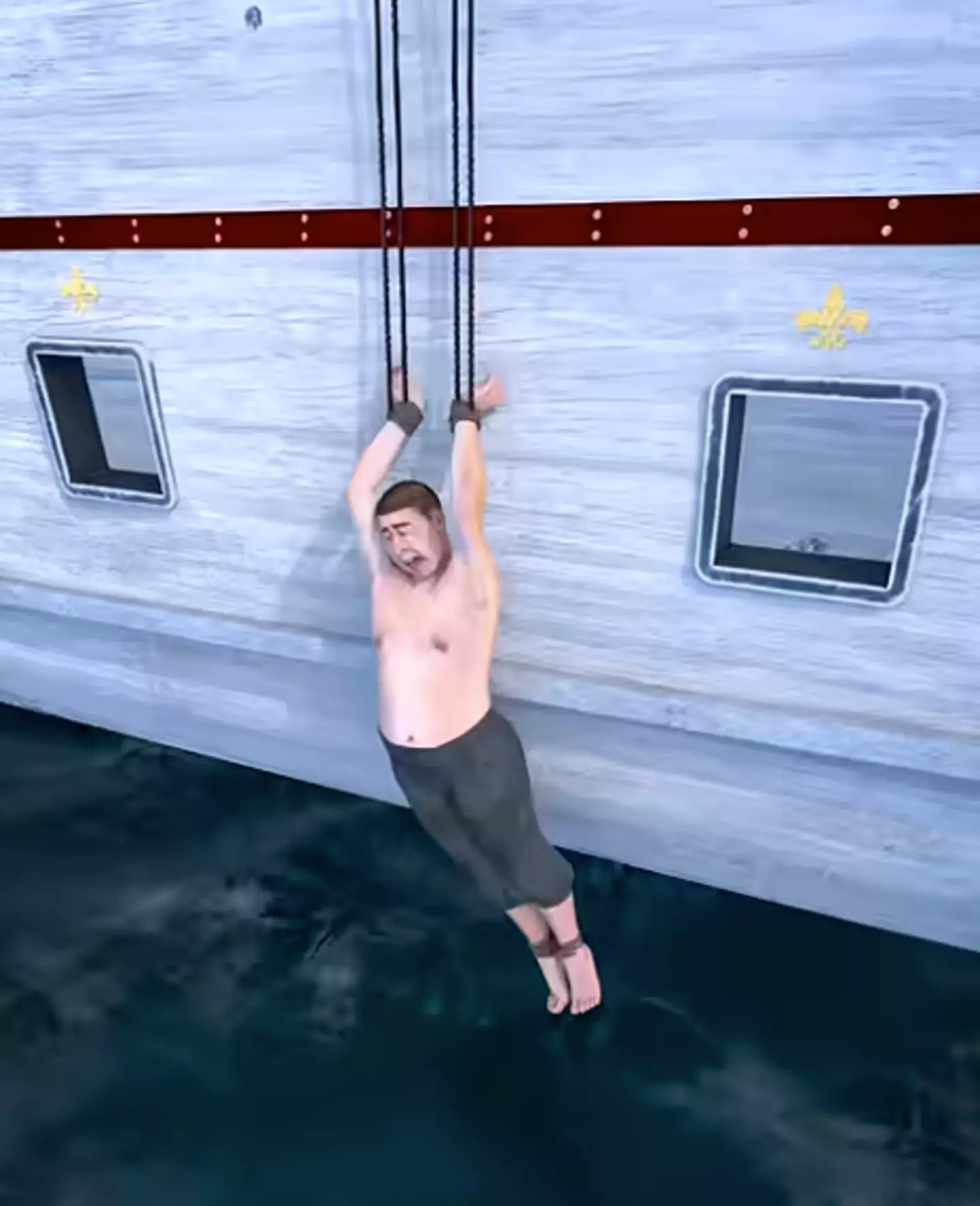Unveiled: The Shocking Torture Ritual That Enslaved Sailors Couldn’t Escape
Ever wondered just how twisted “punishment” got before Netflix’s “dark history” became the binge-worthy norm? Well, strap in—literally—and prepare to dive into a gruesome naval nightmare called keelhauling. Imagine being tied to a rope, dragged beneath a ship’s barnacle-encrusted belly, while seawater stings every fresh cut like a thousand tiny betrayals. Sounds like a maritime version of medieval torture roulette, right? This ancient Greek-originated practice was no joke—reserved for the worst offenders aboard ships, it promised excruciating pain, and often a watery grave. So next time you grumble about your commute, just be glad it doesn’t involve dodging splinters and fighting for air under a 17th-century ship. Curious to see this horror reenacted and get the full, stomach-churning scoop? LEARN MORE.
A simulation shows yet another horrific way that people from the past decided to inflict maximum torment on each other.
If nothing else, history has given us a whole catalogue of grim ways that humans have found to inflict pain and death.
Whether it’s the horrifying scaphism, in which the victim is sealed in a wooden box and fed milk and honey, giving them diarrhoea until insects come and devour them from the inside out, or the rack.
There’s being placed in a bronze bull and cooked alive, of heavy metal band fame, or that old English pastime of hanging, drawing, and quartering.
But this particular punishment is more niche, being specifically for sailors who are currently at sea.

Rather you than me, mate (YouTube/zackdfilms)
No, we’re not talking about the cat o’ nine tails, that multi-corded whip which often had bits of glass or nails sewn into the lashes.
This is keelhauling, a maritime practice dating back to the Ancient Greeks, who used it to punish, or kill, captured pirates.
The premise, as is often the case with these practices, is horrifyingly simple.
A victim would have a rope tied around them and then be lowered off one side of a ship, before being roughly dragged underneath to the other side of the ship.
If you’re thinking that doesn’t sound so bad, think again.
At the time this punishment was still used, up to around the 17th century, the underside of a ship was not a relatively smooth sheet of metal – it was rough, splintering wood and often covered in barnacles.

Sailors were lacerated with barnacles and risked drowning (YouTube/zackfilms)
And if you’ve ever been unlucky enough to cut yourself on a rock while paddling, you know that seawater can sting – now imagine that on the lacerations all over your body from those sharp shells.
All of this while you’re disoriented and trying not to inhale underwater and drown.
For one Dutch sailor, keelhauling wasn’t even the end of it.
In 1652 an unfortunate man was keelhauled for attempting to desert the company.
Then he was given 150 lashes as well, just in case that wasn’t enough, and enslaved for two years.
Some years later in 1673 two Dutch sailors found to have committed murder were also keelhauled.
Keelhauling was only used in rare or particularly serious cases, and the nature of it suggests it would be carried out in front of a crowd of spectators to set an example.
Some have also thrown doubt on whether it was ever carried out at all, citing unreliable evidence.




















Post Comment